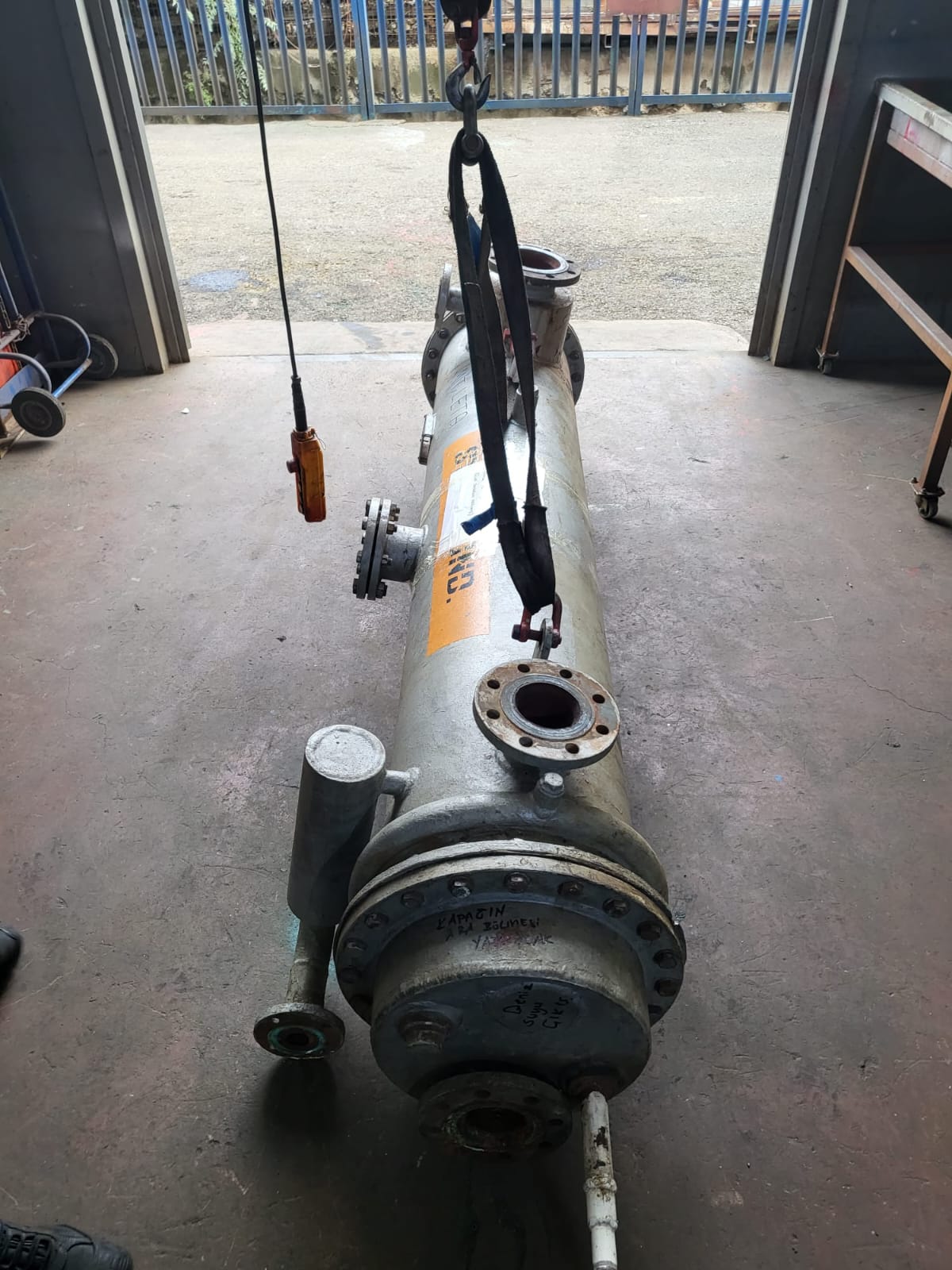Restoring Thermal Control and Operational Stability through Marine Cooler Maintenance
The cooler system on a marine vessel is essential for maintaining optimal engine temperatures, particularly under continuous high-load conditions at sea. Over time, salt, scale, and biological growth can obstruct internal flow paths within the heat exchanger, leading to diminished cooling efficiency and engine overheating. In the observed project, technicians likely performed a full disassembly of the cooler components—such as tube bundles, end covers, and sealing gaskets—for access to the fouled internals. Chemical cleaning solutions or high-pressure hydro-blasting methods would have been used to remove deposits and restore internal flow capacity. All cooling tubes and passageways were then inspected for pitting, corrosion, or deformation, ensuring that heat exchange surfaces met operational standards before reassembly.
Repairs to the cooler housing and associated structural elements are also essential, particularly when corrosion has compromised sealing faces or mounting brackets. The project likely involved machining or welding to recondition surfaces, restoring gasket sealing capability and preventing coolant leaks during engine operation. Damaged or corroded fasteners and gaskets are typically replaced with marine-grade equivalents to withstand thermal cycling and fluid pressure. Technicians often reassemble the cooler units using precise torque specs and alignment tools to prevent mechanical stress that could lead to cracks or warping during service. Once reassembled, a hydrostatic pressure test is performed to verify the system’s ability to contain coolant at the required operating pressure without leaks or deformations.
The final phase of cooler system servicing typically includes performance validation and system reintegration. This involves reconnecting coolant lines, flow sensors, and control valves, followed by gradual ramp-up tests to monitor temperature stabilization under various engine loads. If temperature control remains erratic after reassembly, technicians may adjust flow rates or inspect thermostatic elements for malfunction. Once performance is verified, all maintenance actions are documented and reported for classification society review and compliance. These cooler system repairs contribute significantly to engine stability, efficiency, and safety—especially in high-demand maritime operations. With refreshed thermal control capability, the vessel is better equipped to handle operational stress and reduce long-term mechanical wear.



































